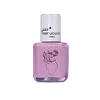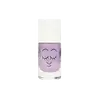What's inside
What's inside
 Key Ingredients
Key Ingredients

 Benefits
Benefits

 Concerns
Concerns

 Ingredients Side-by-side
Ingredients Side-by-side

Water
Skin ConditioningSodium Acrylate/Methylstyrene/Styrene Copolymer
Polystyrene
PPG-3 Methyl Ether
SolventPropanediol
SolventPentylene Glycol
Skin ConditioningCI 77891
Cosmetic ColorantCI 77007
Cosmetic ColorantHectorite
AbsorbentCI 73360
Cosmetic ColorantPEG-40 Castor Oil
EmulsifyingPropylene Glycol
HumectantPEG-150/Decyl Alcohol/Smdi Copolymer
Phenethyl Alcohol
Masking1,2-Hexanediol
Skin ConditioningBentonite
AbsorbentKaolin
AbrasivePPG-30 Butyl Ether
Skin ConditioningAminomethyl Propanol
BufferingPPG-25 Dimethicone
EmulsifyingSodium Hydroxide
BufferingSilica Silylate
EmollientSilica Dimethyl Silylate
EmollientWater, Sodium Acrylate/Methylstyrene/Styrene Copolymer, Polystyrene, PPG-3 Methyl Ether, Propanediol, Pentylene Glycol, CI 77891, CI 77007, Hectorite, CI 73360, PEG-40 Castor Oil, Propylene Glycol, PEG-150/Decyl Alcohol/Smdi Copolymer, Phenethyl Alcohol, 1,2-Hexanediol, Bentonite, Kaolin, PPG-30 Butyl Ether, Aminomethyl Propanol, PPG-25 Dimethicone, Sodium Hydroxide, Silica Silylate, Silica Dimethyl Silylate
Water
Skin ConditioningSodium Styrene/Acrylates Copolymer
PPG-3 Methyl Ether
SolventSynthetic Fluorphlogopite
Phenoxyethanol
PreservativeDisiloxane
Skin ConditioningSodium Bicarbonate
AbrasiveHectorite
AbsorbentSodium Dehydroacetate
PreservativePEG-12 Dimethicone
Skin ConditioningPropylene Glycol
HumectantPPG-2 Methyl Ether
PerfumingPEG-150/Decyl Alcohol/Smdi Copolymer
Potassium Sulfate
Ethylhexylglycerin
Skin ConditioningSodium Hydroxide
BufferingPEG-40 Castor Oil
EmulsifyingT-Butyl Alcohol
PerfumingStyrene/Acrylates Copolymer
Isooctanol
PerfumingBentonite
AbsorbentPPG-30 Butyl Ether
Skin ConditioningAminomethyl Propanol
BufferingSilica Dimethyl Silylate
EmollientTocopherol
AntioxidantCI 77891
Cosmetic ColorantCI 77007
Cosmetic ColorantCI 73360
Cosmetic ColorantTin Oxide
AbrasiveWater, Sodium Styrene/Acrylates Copolymer, PPG-3 Methyl Ether, Synthetic Fluorphlogopite, Phenoxyethanol, Disiloxane, Sodium Bicarbonate, Hectorite, Sodium Dehydroacetate, PEG-12 Dimethicone, Propylene Glycol, PPG-2 Methyl Ether, PEG-150/Decyl Alcohol/Smdi Copolymer, Potassium Sulfate, Ethylhexylglycerin, Sodium Hydroxide, PEG-40 Castor Oil, T-Butyl Alcohol, Styrene/Acrylates Copolymer, Isooctanol, Bentonite, PPG-30 Butyl Ether, Aminomethyl Propanol, Silica Dimethyl Silylate, Tocopherol, CI 77891, CI 77007, CI 73360, Tin Oxide
Ingredients Explained
These ingredients are found in both products.
Ingredients higher up in an ingredient list are typically present in a larger amount.
Aminomethyl Propanol is used to adjust the pH of products. It is also used as a base to create other organic compounds. Having a balanced pH is important for protecting your skin.
Aminomethyl propanol is safe to use in cosmetics up to 1%. It is soluble in water.
Bentonite is an aluminium phyllosilicate clay with great absorbent properties. The name 'bentonite' comes from the area where the largest source is found: Fort Benton, Wyoming.
As a clay, bentonite is often used to absorb excess oil and provide exfoliation. It has also been shown to have some antibacterial and anti-inflammatory properties. Studies show bentonite was effective at calming dermatitis from poison ivy and in diaper dermatitis of infants. Bentonite has also been shown to act as a barrier against toxic compounds on your skin.
Sunscreens containing bentonite display higher water resistance and stay on the skin for much longer. The sunscreens containing bentonite also show higher potency and UV light absorbtion.
Bentonite is naturally created from volcanic ash and several natural weathering/hydrothermal processes.
A common usage of bentonite is removing excess protein from white wines. Bentonite contains a property of being able to absorb large amounts of protein from aqueous solutions.
Phyllosilicate clay has a structure formed by sheets.
Learn more about BentoniteCi 73360 is a synthetic red-pink dye.
This pigment is called Ultramarine blue lazurite. It gives a saturated blue color, but can be used to create other colors as well.
According to the manufacturer, it is usually made from kaolin, sodium sulfate, sodium carbonate, sulfur, and charcoal.
Ci 77891 is a white pigment from Titanium dioxide. It is naturally found in minerals such as rutile and ilmenite.
It's main function is to add a white color to cosmetics. It can also be mixed with other colors to create different shades.
Ci 77891 is commonly found in sunscreens due to its ability to block UV rays.
Learn more about CI 77891We don't have a description for Hectorite yet.
We don't have a description for PEG-150/Decyl Alcohol/Smdi Copolymer yet.
Peg-40 Castor Oil is a peg (polyethylene glycol) derivative of castor oil.
This ingredient may not be Malassezia folliculitis, or fungal-acne safe.
We don't have a description for PPG-3 Methyl Ether yet.
We don't have a description for PPG-30 Butyl Ether yet.
Propylene Glycol is an odorless, colorless liquid. As a humectant, it helps skin retain moisture. It also aids in delivering active ingredients.
Another role of this ingredient is preventing a product from melting or freezing. Propylene glycol also adds antimicrobrial properties to a product, elongating product lifespan.
This ingredient is considered an organic alcohol and commonly added into both cosmetics and foods.
Those with sensitive skin or conditions may develop a rash when using this ingredient.
Learn more about Propylene GlycolThis silica is mainly used to thicken oils and suspend particles in oils. It is not water soluble.
According to the manufacturer, it:
The manufacturer also claims this ingredient to be useful in makeup.
In lipstick formulations, this ingredient improves color payoff, reduces pigment settling, and reduces oil bleeding. This ingredient also improves the grip of powder products such as dry shampoos.
Learn more about Silica Dimethyl SilylateSodium Hydroxide is also known as lye or caustic soda. It is used to adjust the pH of products; many ingredients require a specific pH to be effective.
In small amounts, sodium hydroxide is considered safe to use. However, large amounts may cause chemical burns due to its high alkaline.
Your skin has a natural pH and acid mantle. This acid mantle helps prevent harmful bacteria from breaking through. The acid mantle also helps keep your skin hydrated.
"Alkaline" refers to a high pH level. A low pH level would be considered acidic.
Learn more about Sodium HydroxideWater. It's the most common cosmetic ingredient of all. You'll usually see it at the top of ingredient lists, meaning that it makes up the largest part of the product.
So why is it so popular? Water most often acts as a solvent - this means that it helps dissolve other ingredients into the formulation.
You'll also recognize water as that liquid we all need to stay alive. If you see this, drink a glass of water. Stay hydrated!
Learn more about Water